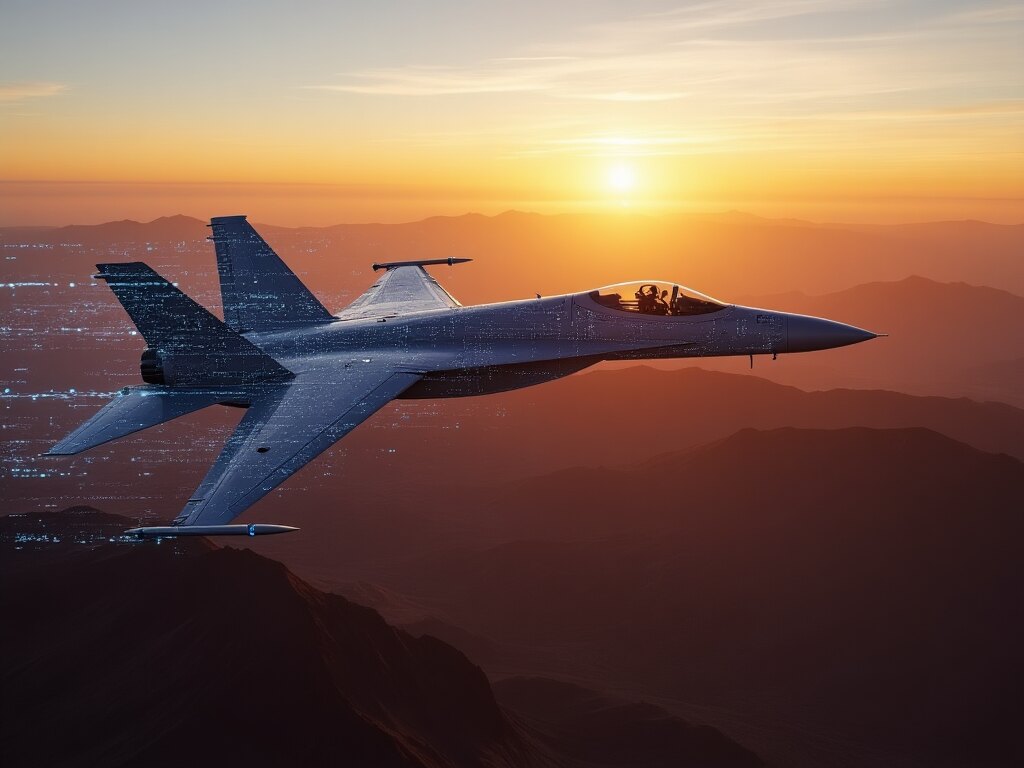
The sky is no longer exclusively human territory.
Imagine, sterile simulation room in 2020. An artificial intelligence pilot known as Falco tears up decades of training about fighter plane maneuvers as the AI performs a series of maneuvers that human pilots thought would kill them. It beats an elite F-16 Weapons School graduate 5-0 in pitting an AI against a human–performing 30 times faster than the human brain in terms of a decision loop. It was the AlphaDogfight Trials of DARPA, the wakeup call that showed that AI could win the dogfight.
Teaching Jets to Think in 4D Space
DARPA Air Combat Evolution (ACE) program is not simply a program to automate controls but one that enginerrs tactical genius. Whereas the traditional autopilot is effective only in straight-and-level flight, ACE prevails over the toughest flight, according to The Aviation Side, the dogfight, the most dynamic in air traffic. To engineer the AI, the engineers give it millions of combats scenes to learn how to do instantaneous kinetic trade-offs, foresee the moves of the enemy in a way that would be comparable to the chess grand master, and allow aircraft to fall outside of human G-force.
The actual innovation? Interfilling simulation and reality. DARPA AI-piloted an X-62A VISTA (a modified F-16) in a real dogfight against a manned jet last fall )making history in doing so). Unclassified results are borne out by insiders who have made clear that the AI did not disappoint. Four L-39 jets equipped with AI are currently preparing to perform tests in real combat conditions on Lake Ontario where they will test the algorithms under the conditions of real chaos: turbulence, electromagnetic pulses, etc.
The Trust Tightrope
The irony here is that capability is not the largest challenge but rather it is trust. According to one DARPA colonel, the pilots require understanding that AI has to be within the rules (safety and morals do not offer compromises). That is the reason why all breakthroughs involve strata of human control:
- During 21 test flights of the program, safety pilots sat as the shotgun riders required to put their fingers hovering on the override switch
- This year, Air Force Secretary Frank Kendall himself will fly the AI jet- a symbolic milestone
- The Mosaic Warfare imaging places humans in the role of practical engineers of the battlefield where they conduct an orchestra of AI-operated drones
Beyond Dogfights: The Autonomous Horizon
It is in the second phase of DARPA Artificial Intelligence Reinforcements (AIR) program that things get sci-fi. having invested 26 M$, engineers are training AI to synchronize teams of unmanned F-16s to carry out beyond-visual-range attack. Think about jets to engage in coordinated strikes in enemy territory with a human being leading form Nevada.
This fits perfectly in the Air Force effort to have command divided into 52 micro-functions. And as one combat trainer says plainly: Against near-peer threats, human pilots would be paralyzed by data overload. There is no blinking AI.”
Why Pilots Still Matter (For Now)
Not all are hopping the AI hype train. In his submission, retired Brigadier General Doug Wickert holds that full autonomy warfighting is still centuries away due to the uncertainty of AI behavior and the problem of moral burden of kill decisions. There are also tactical issues that persist such as whether or not AI will respect safety buffers when performing high-G maneuvers.
In the vicinity, autonomous Black Hawks are already being tested by the Army, the Air Force has a $99M AI target-tracking program. The future is becoming real quickly- yet human beings are the thread at the center of it all.
The Final Verdict
It is no longer a question of, can AI outfly humans? so as to the more pertinent question: “Should it?” The test flight Secretary Kendall will make is not technical only–it is philosophical. Sign off and crews could lose fighters within 10 years.
But the warning of Wickert reverberates: Taking humans out of the kill chain may make war feel like a video game — reducing the barrier to conflict. As one engineer sourly said when asked about the ACE tests, pilots were doing a good job of writing their own obituaries.
The actual argument? Are AI pilots saves the lives by keeping human out of the battlefield- or AI is simply and very easy way to war?